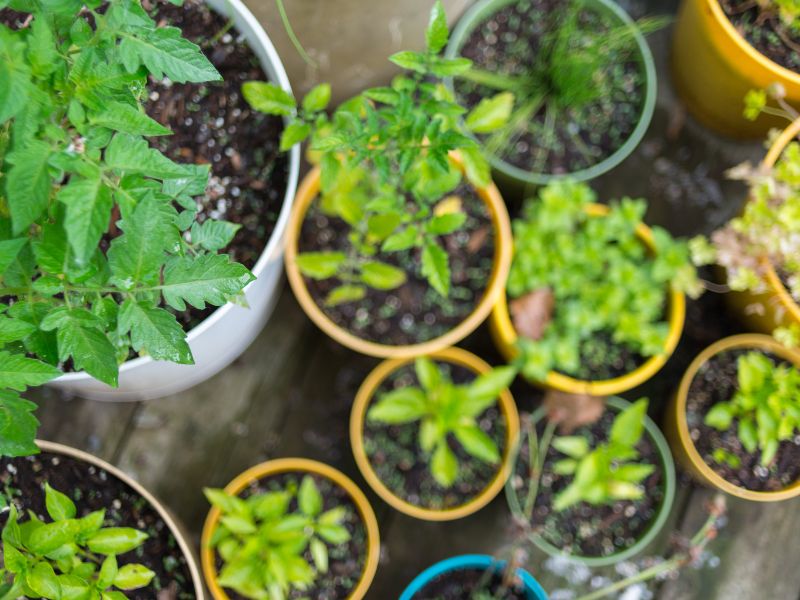Climate Solutions: How Do I Add Compost to Container Plants?

Container gardening is an incredible solution to a variety of growing woes, especially when it comes to the creative and economical use of space. Gardeners lacking backyards or yards with full sun exposure, gardeners working with truly difficult soil, and new gardeners looking to gain confidence in the craft are common beneficiaries of the practice. So where does compost come in? It’s a key ingredient to establishing and maintaining a nutrient-rich growing environment for your containerized plants. When setting up a new container, there are three principal considerations: (1) Filling it with a nutrient-rich growing medium (2) Reducing chances of compaction of the growing medium (3) Promoting good drainage Here are a few strategies to achieve these goals:
- Make sure the container has drainage holes at the bottom. Drill them yourself, if necessary. Plant roots that are sitting in pools of water will rot.
- Add some chunky, woody materials near the bottom of the container (i.e. bark, tree branch segments). These materials will also serve as a slow-release carbon source.
- Create a light and fluffy growing medium. There are many possible mixes, here’s one example we at Solana Center have found useful:
- 1/3 compost or a compost/vermicompost mixture
- 1/3 coconut coir
- 1/3 sandy soil
The process of adding compost to an existing container plant is not unlike adding compost to plants in a larger-scale garden. The trick is to provide a continual supply of nutrients over time, as the small space of the container paired with continual watering can lead to rather rapid nutrient deprivation. Some of the options to achieve this goal include:
- Watering container plants with liquid compost. Compost tea and worm tea are easy to make and even easier to apply!
- Mulching exposed soil with traditional compost- especially if the compost is a bit woody.
- Digging shallow ‘moats’ around plants and filling them with compost or vermicompost allows nutrients to soak down toward plant roots with every watering. Take care not to disturb plant roots when digging.
- Repotting. Larger container plants (i.e. dwarf fruit trees) will require it, though it’s not a bad idea to upgrade growing space for smaller plants, too. Be sure to add fresh growing medium when transferring containers. While repotting will provide more storage space for nutrients, avoid doing so regularly, as it can disturb the containerized plant.
And finally, in celebration of springtime, here are a few tasty seasonal suggestions for veggies and herbs that grow well in containers:
- Beans
- Chives
- Cilantro
- Cucumbers
- Dill
- Eggplant
- Kale
- Leafy greens (look for mesclun mixes for a readymade variety of tastes, colors, and textures!)
- Parsley
- Peppers
- Summer Squash
- Tomatoes
Let us know about your springtime container garden successes: comment on our posts or message us on Instagram, Facebook, LinkedIn, or Twitter! We look forward to hearing from you.
